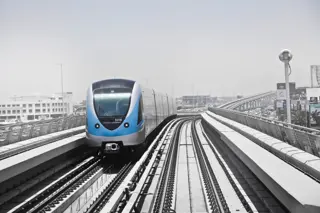How Metro Expansion Drives Growth in Ranga Reddy’s Growing Neighborhoods
 Hyderabad’s bold metro expansion is changing real estate dynamics in Ranga Reddy’s new areas, turning former outskirts into top investment spots. The 76.4 km Phase 2 routes—including Raiadurgam-Kokapet Neopolis (11.6 km) and airport-Future City extensions (40 km)—are set to change how we connect, price, and demand in places like Kokapet and Narsingi.
Hyderabad’s bold metro expansion is changing real estate dynamics in Ranga Reddy’s new areas, turning former outskirts into top investment spots. The 76.4 km Phase 2 routes—including Raiadurgam-Kokapet Neopolis (11.6 km) and airport-Future City extensions (40 km)—are set to change how we connect, price, and demand in places like Kokapet and Narsingi.
Rental Yields: A Rising Demand
The metro’s coming to these areas is likely to increase rental incomes through:
- Better commutes: Shorter travel times to IT hubs like Financial District and Hi-Tec City
- Student housing demand: Close to schools and institutes in Kokapet’s Neopolis area
- MIDC zones access: More visibility for commercial rentals near industrial zones This trend follows past patterns where metro-friendly areas see 15-20% rental premium compared to similar non-metro areas.
Connectivity: The Main Growth Driver
The metro’s expansion will fix traffic jams, with key benefits including:
| Effective From | Benefit | Metro Corridor |
|---|---|---|
| Post-2026 | Direct access to Shamshabad Airport | Nagole-Shamshabad |
| 2025 Demolition Phase | Property acquisition normalization | MGBS-Chandrayangutta |
| Future City Links | Cross-city commutes under 30 mins | Airport-Mirkhanpet |
Areas like Narsingi will see less reliance on road networks, making them appealing to working professionals looking for balanced lifestyles.
Property Valuation Trends: New Patterns
The metro’s announcement has already caused pre-construction price hikes in targeted areas:
- Kokapet Neopolis - New residential and commercial projects targeting metro-adjacent plots
- Narsingi - Developers move to high-rise apartment projects
- Future City - Speculative demand for mixed-use complexes near metro stations Industry experts predict 10-15% annual growth in these areas through development stages.
Beyond Infrastructure: Specific Growth Drivers
The metro expansion fits with broader urban planning efforts, creating chances for:
- Education corridors: Close to Young India Skills University in Future City
- Healthcare hubs: Developments along MGBS-Chandrayangutta routes
- Growth opportunities: It's good time to investment, as rental demand is expected to rise quickly..
Government Collaboration: The Hyderabad Metropolitan Development Authority (HMDA) and Future City Development Authority (FSDA) are working together to drive land pooling and transit-oriented development plans to maximize corridor benefits.
Emerging Challenges and Strategic Considerations
While growth potential is clear, stakeholders need to handle:
- Land acquisition issues: Delays in clearing Chandrayangutta extensions
- Funding uncertainties: 50:50 central-state cost-sharing models facing approval challenges
- Amenity gaps: Need for concurrent infrastructure (roads, utilities) alongside metro development
This strategic change puts Ranga Reddy’s new neighborhoods at the center of Hyderabad’s urban growth, offering investors and developers calculated entry points in promising metro-aligned markets.